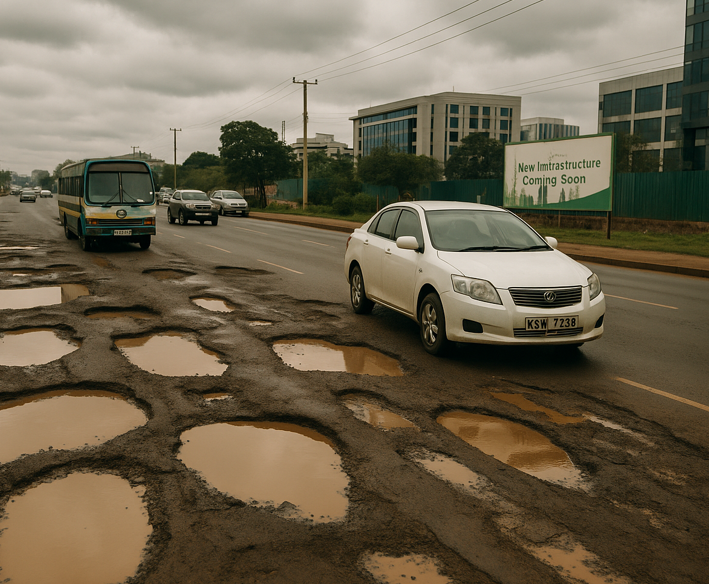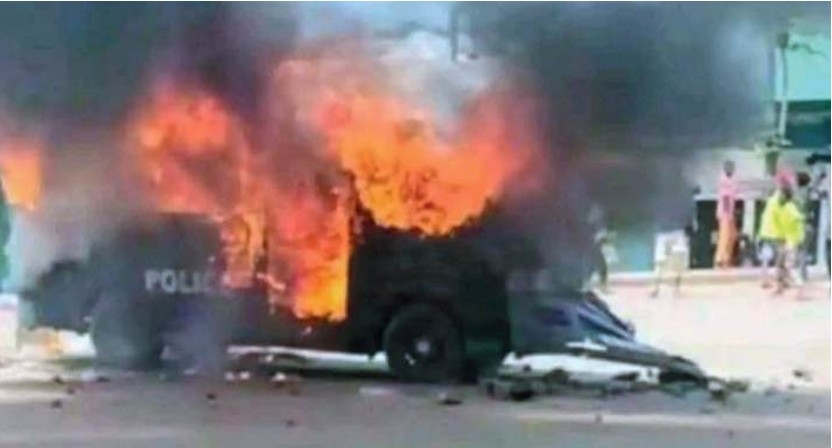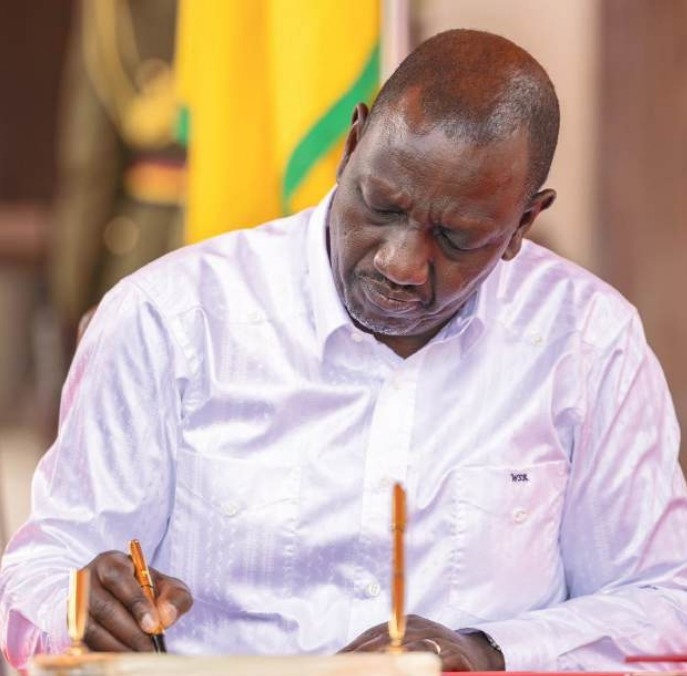
Driving through Nairobi today requires the skills of a rally driver. Our capital's roads have deteriorated into obstacle courses of potholes and hastily filled holes that do more harm than good.
Even affluent neighbourhoods like Karen, Kilimani and Upper Hill haven't been spared this infrastructure crisis. In many instances, entire road sections are in disrepair, creating hazardous conditions for drivers.
On Jogoo Road, some residents have resorted to filling potholes themselves, highlighting the desperation and lack of immediate government intervention. When confronted, officials engage in a bureaucratic shell game.
The county government points to the Kenya Urban Roads Authority, which cites budget constraints and competing priorities. Meanwhile, millions of Nairobians navigate increasingly dangerous roads daily.
But why are our existing roads crumbling beneath our wheels despite our government's ambitious infrastructure projects?
The answer lies in a fiscal phenomenon economists have long observed: when governments face high debt servicing costs, maintenance spending is typically the first casualty. These potholes are a physical manifestation of fiscal policy choices.
The debt service trap
When our Cabinet Secretary recently presented the repayment schedule for public debts, few connected these figures to the potholes plaguing our daily commutes. Yet there's a direct link between Kenya's rising debt burden and our deteriorating infrastructure.
Economist William Easterly explained this pattern in 1999, noting that governments under financial pressure don't simply cut spending across the board. Instead, they make strategic choices about what to sacrifice.
"A fiscally constrained government wants high present consumption at the expense of future benefits," Easterly argued. Governments find alternative ways to maintain current spending levels when limited in how they can shift expenses across time, typically by neglecting infrastructure maintenance.
This neglect represents a terrible economic bargain. A World Bank report from 1994 noted that inadequate spending on operations and maintenance (O&M) during fiscal adjustment reduces current asset value and/or requires future spending to restore those assets.
Though from decades ago, its observation remains relevant in 2025: it found that timely maintenance of $12 billion (Sh1.55 trillion) would have saved African nations' reconstruction costs of $45 billion over a decade. The math is simple: every shilling saved by skipping maintenance today costs multiple shillings tomorrow.
What makes maintenance particularly vulnerable is its invisibility. Politicians gain little political capital from preserving existing infrastructure compared to cutting ribbons on new projects. Maintenance doesn't get splashy headlines or photo opportunities.
The crisis extends beyond road
surfaces. Water supply systems, electricity infrastructure and public
facilities all suffer from the same neglect. Like a homeowner who patches a
leaky roof rather than replacing it, we're merely postponing—and magnifying—inevitable
costs.
When a government prioritises debt servicing above all else, it's essentially trading present fiscal discipline for future infrastructure collapse. This approach satisfies immediate financial obligations but creates a maintenance deficit that compounds over time.
A different path forward
There are alternatives to this spiral of neglect. First, we need greater transparency about operations and maintenance allocations across all infrastructure categories. These figures should be published alongside debt servicing costs so citizens can see the true price of fiscal choices.
Second, we should establish mandatory minimum maintenance requirements that cannot be sacrificed even during budget constraints. Some nations have successfully implemented "infrastructure preservation trusts" that ring-fence maintenance funding.
Finally, we must recognise that truly responsible fiscal management includes preserving public assets. A government that builds new roads while letting existing ones crumble isn't demonstrating fiscal responsibility; it's simply shifting costs to future administrations and generations.
Our potholes have a story to tell—if only we would listen. The next time you hear about Kenya's debt servicing burden, think about what you're not hearing: the silent deterioration of the public infrastructure we all depend on. As you navigate Nairobi's pothole-riddled streets tomorrow, remember: those craters aren't just signs of wear and tear. They're physical manifestations of fiscal policy choices made far from the roads themselves, in the offices where decisions about debt and spending priorities shape our everyday reality.












![[PHOTOS] Ruto dazzles in colourful maasai outfit](/_next/image?url=https%3A%2F%2Fcdn.radioafrica.digital%2Fimage%2F2025%2F11%2F8ccfbfe5-a43a-49b3-88f4-b99a41be4594.jpeg&w=3840&q=100)




